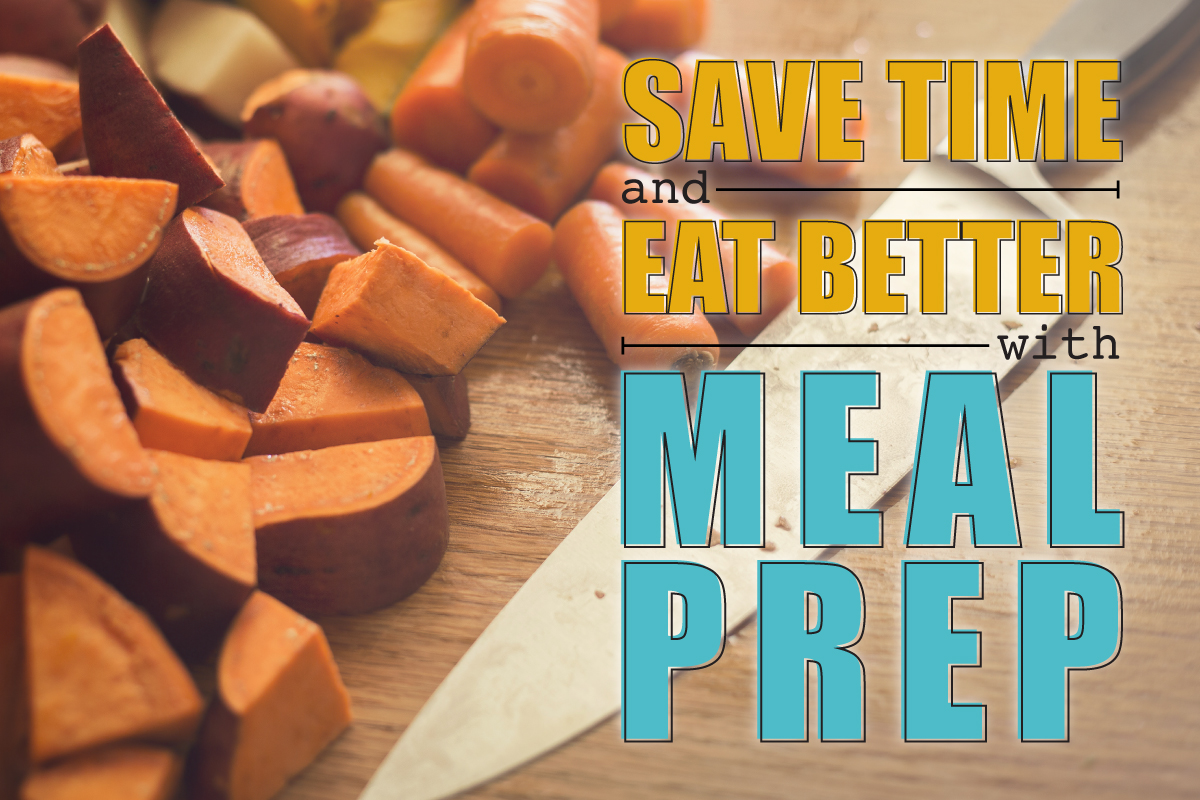Save Time and Eat Better with Meal Prep
Now that you’re on track to a healthier lifestyle, you may find that you’re spending more time preparing meals than ever before. You may even believe you need to make everything in small quantities to ensure freshness and high quality. While a diet full of the freshest fruits and vegetables you can find is a great lifestyle choice, you don’t have to sacrifice all your extra time in the kitchen. After all, you need plenty of time for exercise and rest as well!
Meal prep is an easy way to buy yourself a little extra time–and save yourself a little money. Here are some tips to get you started prepping healthy and delicious meals that suit your diet and wallet.
Work With What’s Available
The first rule of good food prep is to start with what you already have. Clean out your fridge and take an inventory. One blogger calls this her lazy meal prep because it seems almost too simple.
Assess what you have and how it can be used.
CHOP any vegetables and fruits that are still good.
ROAST any veggies that are on the verge but still work great in frittatas or over rice.
BLEND the berries, citrus, spinach, etc. that’s too good to throw out but too far gone to eat alone. Then, freeze in ice cube trays for smoothies.
LIST what’s left and meals that work with these items.
LABEL snacks in reusable containers so your family knows what is available.
Do this each week. Chances are, when you’re done, you’ll have a head start on the next week’s meals.
Quantity and Quality
With food, of course we want good quality, but this doesn’t mean leftovers aren’t good. In fact, batch cooking for the purpose of having leftovers is a huge time-saver. If you’re already spending three nights a week boiling rice or quinoa, cook it all in one big batch. Just refrigerate and reheat the other portions for different meals. Grains work great in salads as well, and, topped with those roasted veggies from your fridge clean out, make an easy lunch.
Shredded chicken is one of the most versatile items you can keep on hand. Each weekend, slow cook a batch of chicken breasts or purchase a couple of rotisserie chickens and de-bone them. Once you have a container full of shredded chicken, you can make tacos, pizza, salads, sandwiches, wraps, casseroles, soups… the list is truly endless. And since you’ve already chopped veggies and cooked a grain for the week, you have a ready made meal no matter what time it is when you arrive home. (Ground beef or turkey works great for batch cooking, too!)
Another staple of good meal prep is boiled eggs. Cook up a dozen or so each weekend. Add to lunches for extra protein, grab as quick snacks or breakfasts, or chop and add to salads.
Prepare and Plan
Once you know how to work with what’s available and how to embrace quantity for the quality of a home cooked meal, you’re well on your way to successful meal planning. The debate is wide open on the ease of planning a week ahead, or a month ahead, or a paycheck ahead, but as you incorporate these changes, decide which system works best for you. With your weight loss surgery, you will be eating less. Depending on your family size, you may find it easier to plan only 2-3 meals for the week, especially since a normal serving for you might now stretch into two meals.
You may also find that it’s helpful to keep certain days of the week consistent. This keeps you from trying to come up with creative and healthy meals each week because you have established parameters. Taco Tuesday, for example, is wide open for variety but gives your planning a specific focus.
Finally, when you shop for the week ahead, go to the store at a time when you aren’t hungry, tired, or stressed. Remember, food does not have to be your comfort or reward. Rather, you can give yourself the gift of time and sanity by meal prepping–and having energy left for yourself and your family.


No comments